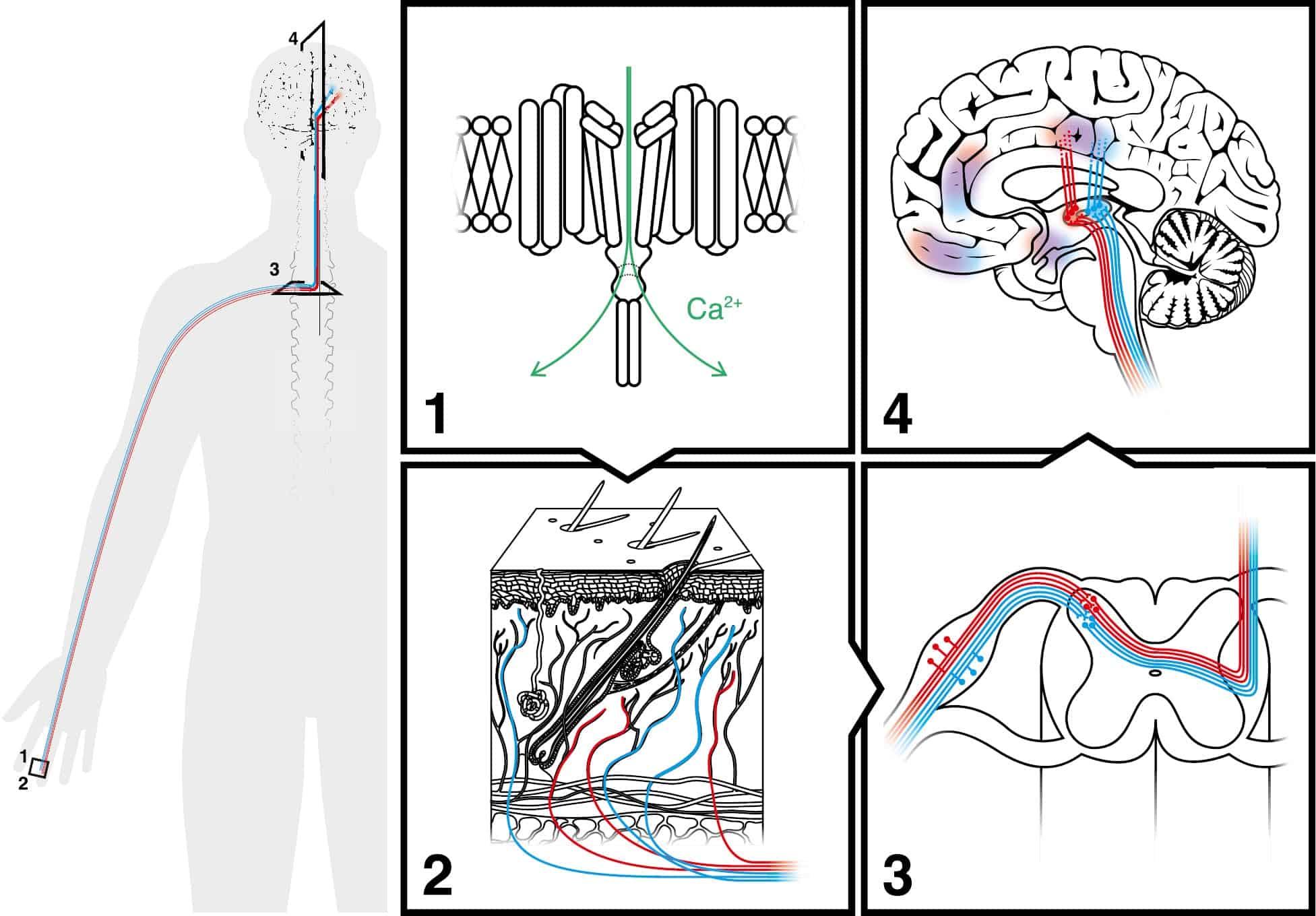How do we feel temperature? Highway of thermosensation from the skin to the brain
From choosing our next holiday destination to avoiding getting burnt while cooking, temperature plays a decisive role in our daily lives. In fact, temperature maintenance and detection are essential for the survival and perpetuation of any species in the world.
How then do you detect temperature? A review from Reviews in the Neurosciences explores the neurophysiology of thermosensation. The temperature (and pressure) established on Earth serves as a unique (from what is known) cultivation environment since many elements are stable and chemical reactions can take place at the right pace and in the correct amounts.
However, in this well-established but fluctuating atmosphere, organisms need to stay within a particular temperature range in order to maintain their bodily functions. We must be aware of and respond efficiently to temperature and its effect.
In their article, the authors walk the reader through the anatomical and physiological characteristics of each component in detail. We don’t have thermometers in our skin, instead we have proteins (transient receptor potential (TRPs) ion channels) that react to temperature changes.

Interestingly, there are distinct TRPs for different temperature ranges. They open or close depending on temperature changes and the intrinsic voltage of the membrane, which results in the hyper- or de-polarization of neurons. These neurons have either innocuous cold or hot receptors. Therefore, innocuous cold or hot sensation seems to be transmitted (almost) separately.
Pathways from skin to brain
On the other hand, neurons that activate at harmful temperatures are usually multimodal, so they simultaneously express receptors for noxious heat and cold. All this information is transmitted by different pathways from the skin to the brain. In the brain there are areas where thermal information remains separated, but in other parts, the electric signals are integrated to generate a response or give rise to thermoperception.
Future impact on technology and AI
Temperature detection is vital for everyone. Thermoperception is conditioned by the way information transduces and transmits; it is not as simple as if we were to have internal thermometers – which is what the researchers study in their lab. The researchers study how the comprehension of thermosensation could help us to explains the creation of concepts of heat and temperature. They are currently working on how this new approach could be applied to neurodidactics, but also foresee the impact this approach will have on technology, for example, wearables and air conditioning, and AI.
The understanding of the neurophysiology of thermosensation will help to improve medical treatments, didactics, the textile, air conditioning and heating industries. This will bring about an endless number of applications, so you better keep an eye on temperature!
Read the original article here